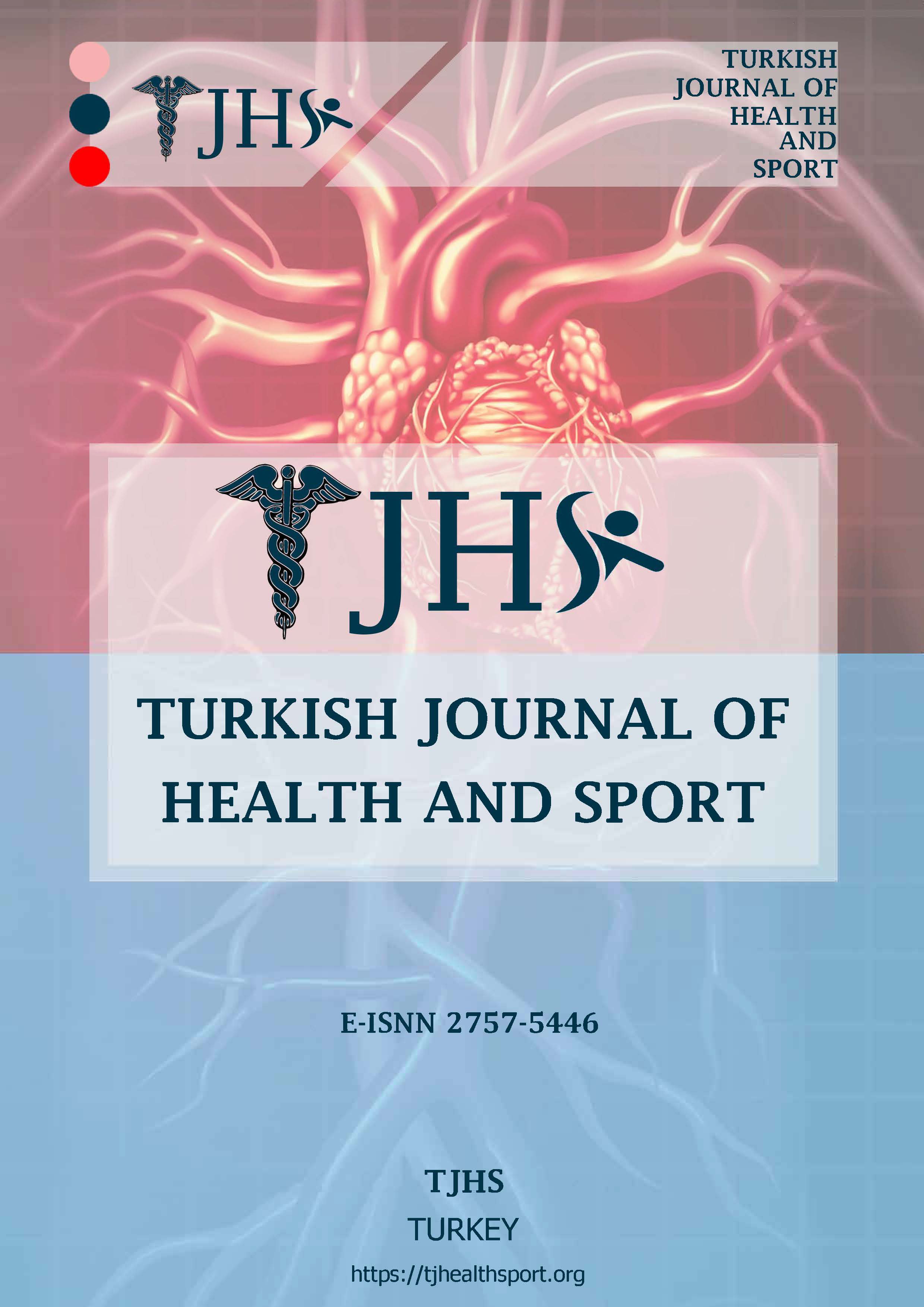8-10 YAŞ GRUBU AMATÖR SPORCU ÇOCUKLARDA GÜNLÜK FİZİKSEL AKTİVİTE İLE MOTOR PERFORMANS ARASINDAKİ İLİŞKİ
Author :
Abstract
Amaç: Bu araştırmanın amacı, 8-10 yaş grubu amatör sporcu çocuklarda fiziksel aktivite ile motor performans arasındaki ilişkinin belirlenmesidir.
Yöntem: Araştırmaya yaş ortalaması 9.18±0,8 yıl olan 50 kız, 37 erkek toplam 87 amatör gönüllü sporcu katıldı. Çocukların demografik bilgileri kaydedildi ve fiziksel aktivite düzeyleri “Bouchard’ın Fiziksel Aktivite Kaydı” ile değerlendirildi. Motor performansları ise sekiz alt başlıkta kaba ve ince motor becerileri değerlendiren “Bruininks Oseretsky Motor Performans Testi (BOTMP)” ile belirlendi.
Bulgular: Motor performansı ölçen 8 alt testten üçünde motor performans ile günlük enerji tüketimi arasında anlamlı ilişki vardı. Üst ekstiremitelerin koordinasyonu testleri [Fırlatılan Topu Her İki El ile Yakalama (p=0.001; r=0.399), Dominant El ile Topu Hedefe Fırlatma (p=0.016; r=0.303)] ile günlük enerji tüketimi arasında pozitif yönde anlamlı ilişki saptandı. Günlük enerji harcama tüketimi ile reaksiyon zamanı arasında ise negatif yönde anlamlı ilişki bulundu (p=0.023; r=-0.286).
Tartışma: Araştırmanın sonucunda; çocuklarda motor performansın fiziksel aktivite ile pozitif yönde, sedanter yaşam şekli ile negatif yönde ilişkili olduğu görüldü. Motor performansın fiziksel aktivite açısından belirleyici bir parametre olması nedeniyle bireylerde çocukluk döneminden itibaren motor becerileri arttırmaya odaklanılmasının, çocuğun genç ve erişkin dönemlerindeki fiziksel aktivite ve sağlığını geliştirme hedefine yönelik etkin bir strateji olduğu görüşüne varıldı.
Keywords
Abstract
Purpose: The purpose of this study is to examine the relationship between motor proficiency and physical activity in 8 to 10 year old amateur children athletes.
Methods: Fifty girls and 37 boys, total 87 volunteer amateur athletes who have the mean age 9.18±0,8 years were participated in the research. Children’s demographic data were recorded and physical activity level was assessed by Bouchard’s Physical Activity Record. Motor proficiency was also determined by Bruininks Oseretsky Test of Motor Proficiency (BOTMP which assess gross and fine motor skills with 8 headlines.
Results: The 8 subtests assess motor proficiency, three of them was significantly associated with daily energy expenditure. Upper Limb Coordination Tests [Catching a tossed ball with two hands p=0.001; r=0.399), Throwing a Ball at a Target With Dominant Hand (p=0.016; r=0.303)] and daily energy expenditure were assigned associated significantly on positive way. Daily energy expenditure and reaction time were found associated significantly on negative way (p=0.023; r=-0.286).
Discussion: In results; it’s seen that children’s motor proficiency is positively associated with physical activity and negatively associated with sedentary lifestyle. Due to the fact that motor performance is a determinant parameter in terms of physical activity, it was concluded that focusing on increasing motor skills from childhood onwards is an effective strategy for improving the physical activity and health of the child in the youth and adult periods.





